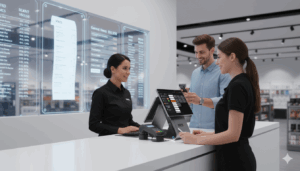My Neighbour's Restaurant Was Dying (Until She Got Desperate)
So my neighbour Lisa owns this little Italian place down the street. Nice woman, makes killer tiramisu, but man – her restaurant looked like a morgana most weekdays.
I’d walk by on my lunch break and count maybe four customers. In the whole place. On a Wednesday. It was painful to watch.
“I don’t get it,” she told me one day while we were both getting mail. “Weekends are slammed. But Tuesday through Thursday? I’m basically paying people to sit in an empty restaurant.”
She was stressed, losing sleep, and honestly? I thought she might close. Then something clicked for her about how to increase restaurant foot traffic on weekdays, and now I can barely get a table on Tuesday lunch.
Want to know what she figured out? It’s not what you’d expect.

She Stopped Trying to Be Everyone's Restaurant
First thing Lisa did wrong – she kept serving her full dinner menu during lunch. Like, who wants osso buco at noon on a Tuesday? Nobody, that’s who.
Lisa finally got smart about weekday lunch specials. She watched her customers for a week and realized most were office workers with exactly 43 minutes to eat (she timed them).
So she created what she calls her “Fast Track” menu. Four options, all ready in under 10 minutes:
- Chicken parm sandwich (pre-made, just heated)
- Caesar salad with grilled chicken
- Pasta with choice of three sauces
- Soup and panini combo
That’s it. No 47 options. No “let me check with the kitchen” delays. Order, eat, leave, everyone’s happy.
Her Tuesday lunch went from $180 a day to $640 a day in six weeks. Same kitchen, same staff, just stopped overthinking it.
She Accidentally Discovered the Best Discount Strategy
Lisa tried the usual discount thing first. “Weekday Warriors Get 20% Off!” Big signs, social media posts, the works. Brought in maybe three extra customers.
Then her credit card machine broke on a Wednesday night. Cash only. She put up a handwritten sign: “Sorry, cash only tonight. 10% off your bill for the inconvenience.”
A weird thing happened. People loved it. They felt like they were getting away with something. Like they’d discovered a secret deal.
So Lisa made “Cash Wednesday” a permanent thing. 10% off if you pay cash. But here’s what’s genius – she also started a punch card that night. Buy nine Wednesday dinners, get the tenth free.
Now she’s got 30 people who plan their week around Wednesday at Lisa’s. They bring friends. They order wine because hey, they’re saving money anyway.
What Failed | What Worked |
Generic 20% off flyers | Cash Wednesday with punch cards |
“Please come we’re desperate” energy | “You found our secret deal” feeling |
Competing with chain restaurant prices | Creating a weekly tradition that people look forward to |
Hoping random people show up | Building a crew of Wednesday regulars |
Her Social Media Was Accidentally Perfect
Lisa isn’t tech-savvy. At all. But her daughter convinced her to post behind-the-scenes stuff on Instagram.
The first video she posted was her making pasta sauce at 6 AM, half-awake, hair in a messy bun, talking to her phone like it was a person. “Okay, so apparently I’m making a video about tomato sauce. This is weird. But anyway, here’s how you make it not taste like ketchup…”
That video got more likes than anything she’d ever posted. Comments like “This is so real” and “I’m coming in just to try that sauce.”
Now Lisa does restaurant weekday marketing without even knowing she’s doing it:
- Tuesday morning sauce prep videos (still half-asleep)
- Thursday afternoon bread-baking time-lapses
- Random conversations with her regulars (with permission)
- Mistakes and kitchen disasters included
People show up saying “I saw your video where you burned the garlic.” She’s become the neighborhood’s cooking show, and people want to be part of it.
Industry reports say authentic content works better than polished ads, but Lisa proved it by accident.
She Built Loyalty by Accident Too
Lisa’s not a business strategist. She just started remembering what people ordered.
“Hey John, you want your usual turkey sandwich?” “Sarah, extra parmesan on the Caesar today?”
Then she started keeping a notebook. Tuesday regulars in one section, Wednesday people in another. What they ordered, who they came with, random stuff they mentioned.
Sounds stalky? It’s not. It’s what good bartenders have done forever.
Now when someone hasn’t been in for two weeks, Lisa texts them. “Hey, haven’t seen you lately. Is everything okay?” Half the time they come on that day.
Her customer retention strategies aren’t sophisticated. She just treats people like neighbours instead of transactions
The Thing That Changed Everything
Here’s where Lisa got really weird. She started “Cooking School Tuesday” by accident.
This lady comes in and asks how Lisa makes her alfredo sauce so creamy. Instead of just telling her, Lisa brings her back to the kitchen and shows her.
Other customers got curious. Started asking questions. Pretty soon Tuesday afternoons became informal cooking lessons for whoever wanted to watch.
Lisa started charging $25 per person. Two-hour sessions, you learn to make one dish, then eat what you made.
Sounds crazy? She’s booked solid six weeks out. People bring their kids, their dates, their coworkers. It’s become this weird community thing that only happens on her slowest day.
Same with “Wine Education Wednesdays” – just Lisa talking about whatever wine she opened, how it tastes, why it goes with certain foods. People eat dinner while learning. Costs extra $15, totally worth it.
Six Months Later, Lisa's Problems Are Different
Now Lisa complains about good problems. “I can’t fit everyone who wants cooking lessons.” “My Wednesday cash customers are bringing too many friends.”
Her restaurant’s foot traffic on Tuesday through Thursday now exceeds that of most restaurants on weekends. The cooking classes alone bring in $800-1200 per week.
But listen – it wasn’t smooth. The first cooking class was just Lisa and her sister. First few cash Wednesdays brought in maybe $50 extra. Her early videos were awkward and nobody watched them.
The difference is Lisa kept doing it anyway. Every Tuesday, every Wednesday, every weird little video. Consistency beat perfection.
Last week I walked by on Tuesday lunch and couldn’t see an empty table. Lisa was behind the counter, hair still messy, talking to customers like they were old friends.
“I can’t believe this worked,” she told me later. “I was just trying not to go bankrupt.”
Sometimes the best business strategy is just being human and not giving up.
Start with one thing. Make Tuesday special somehow. Post a real video. Remember your customers’ names. Your empty restaurant isn’t a failure – it’s potential waiting for someone to pay attention.
FAQs
Creating focused weekday lunch specials with quick, appealing menu options and limiting choices speeds up service and matches customer needs, boosting traffic and sales
Unique offers like “Cash Wednesdays” with discounts, punch card loyalty programs, and themed weekly events such as cooking classes or wine education encourage repeat visits and build community.
Behind-the-scenes videos and unpolished, relatable posts engage local audiences, generate buzz, and create a sense of connection, inspiring followers to visit during typically slow times.



